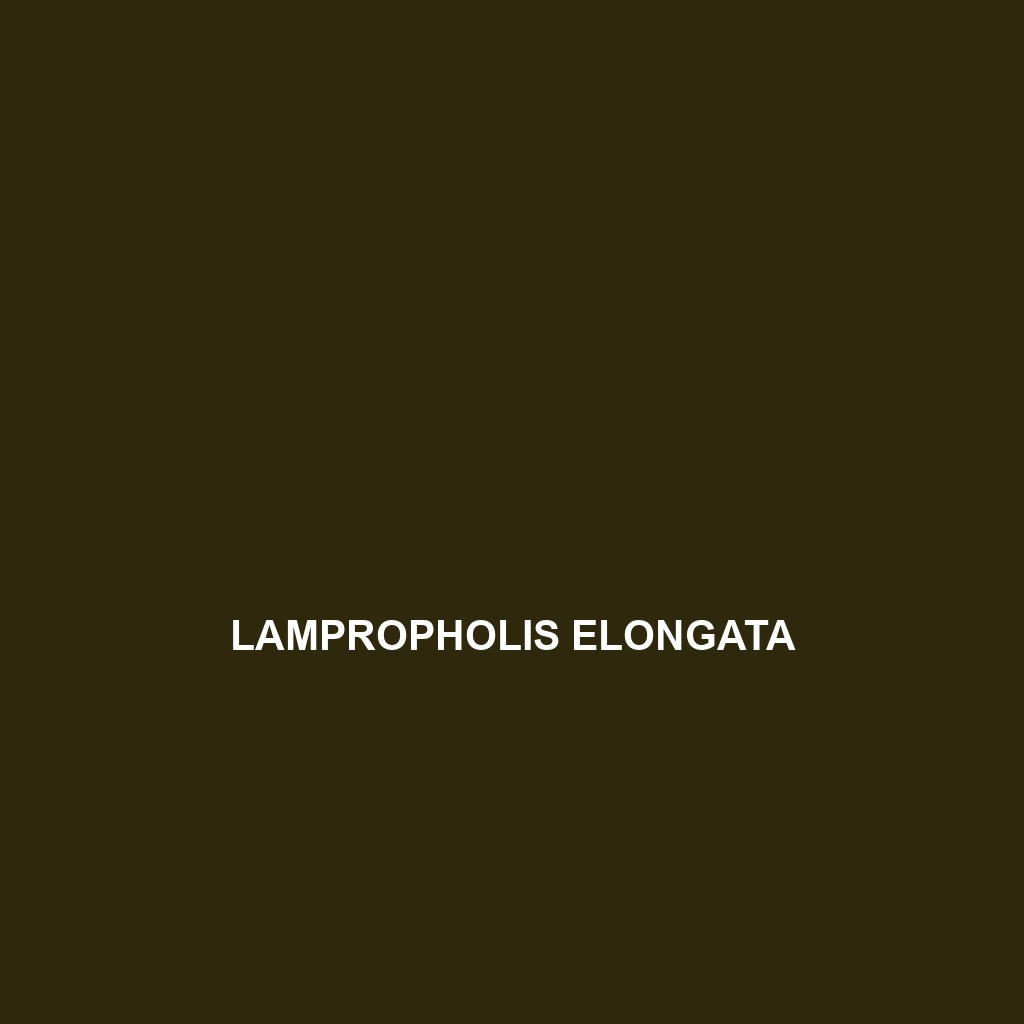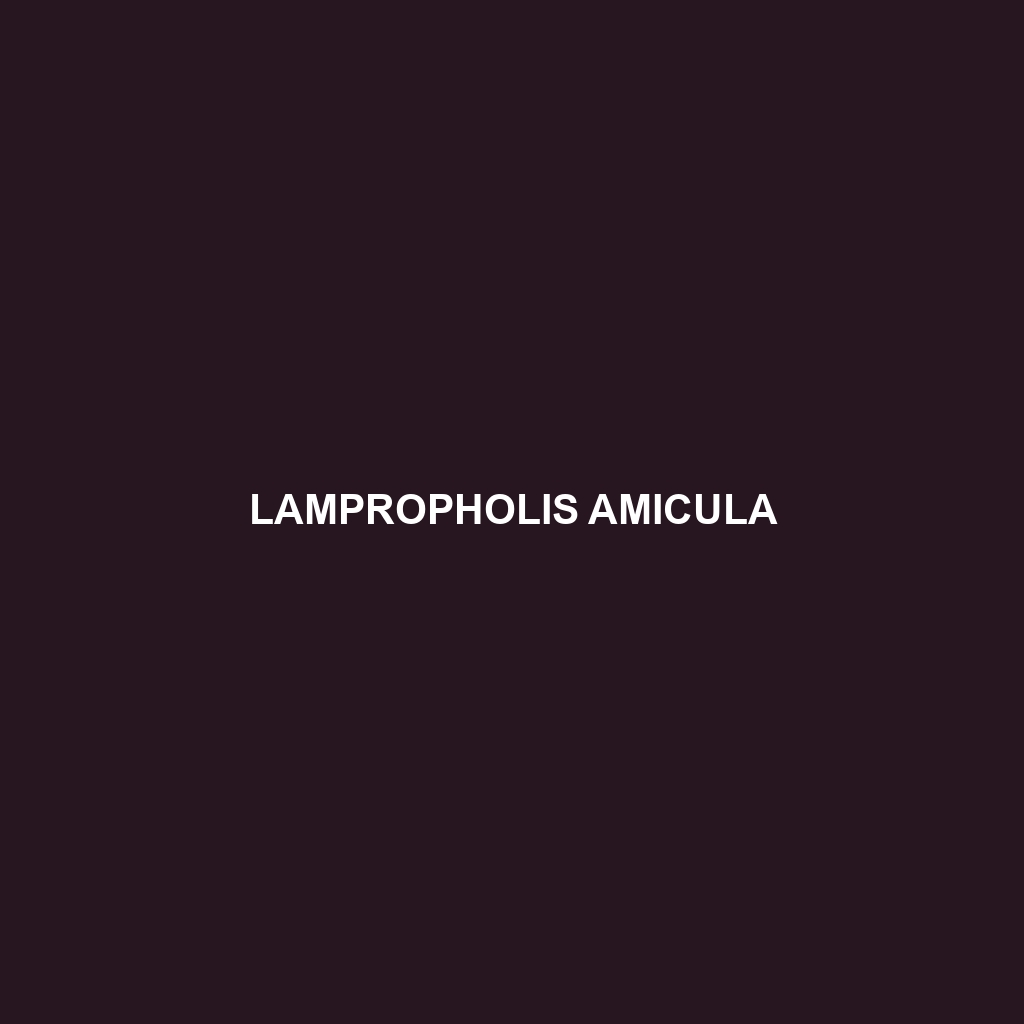Discover the <b>Roberts' Skink</b> (<i>Lampropholis robertsi</i>), a slender and vibrant Australian lizard known for its diurnal behavior, fascinating courtship displays, and role as an insectivore that helps maintain ecological balance. This species thrives in diverse habitats like rainforests and temperate forests while exhibiting remarkable tail regeneration abilities.
Tag: tail regeneration
Lampropholis elliotensis
Elliot's skink (<i>Lampropholis elliotensis</i>) is a diurnal, slender lizard found in the temperate forests and rainforests of eastern Australia, known for its smooth, shiny scales and ability to regenerate its tail. Primarily feeding on small invertebrates, this species plays a crucial role in maintaining ecological balance by regulating insect populations.
Lampropholis amicula
<p>Discover the <b>Lampropholis amicula</b>, commonly known as the eastern rainbow skink, a vibrant, iridescent skink found in the rainforests and temperate forests of eastern Australia. Measuring 8 to 10 cm, this <i>insectivorous</i> species plays a crucial role in its ecosystem by controlling insect populations and serves as prey for larger predators.</p>
Lamprolepis leucosticta
The Lamprolepis leucosticta, or White-spotted Skink, is a striking tropical reptile native to Southeast Asia, known for its elongated body adorned with distinctive white spots and a diet that includes insects and plant matter. Thriving in humid forests and savannas, this diurnal skink plays a vital role in its ecosystem by controlling insect populations and serving as prey for various predators.
Lacerta schreiberi
<h2>Italian Wall Lizard (Lacerta schreiberi)</h2> <p>The <b>Italian Wall Lizard</b> is a slender, vibrant reptile, thriving in Mediterranean habitats across Italy, known for its distinct coloration and diurnal behavior. As an insectivore, it plays a key role in regulating insect populations while showcasing remarkable adaptations such as tail regeneration.</p>
Japalura dasi
Discover the vibrant Japalura dasi, or Das's Japalura, a medium-sized, diurnal lizard native to the lush rainforests and temperate forests of southeastern Asia. With its distinctive green coloration, spiny scales, and elaborate mating displays, this insectivorous species plays a crucial role in its ecosystem while facing challenges from habitat loss and illegal trade.
Indotyphlops malcolmi
Introducing the Indotyphlops malcolmi, or Malcolm’s Blind Snake, a small, nocturnal snake native to Southeast Asia, known for its smooth, elongated body and unique adaptation of blindness, allowing it to thrive in moist, loose soil while preying on small invertebrates. With a length of 10 to 15 inches, this remarkable species plays a vital role in its ecosystem by controlling pest populations and aerating the soil.
Iberolacerta monticola
The Iberian rock lizard (Iberolacerta monticola), found in the mountainous regions of northern Portugal and Spain, features a slender body, vibrant coloration ranging from green to brown, and is known for its agile climbing skills. This diurnal insectivore plays a critical role in its ecosystem by regulating insect populations and serves as prey for larger predators.
Iberolacerta cyreni
<p>The <b>Iberolacerta cyreni</b>, or Cyren's Iberian lizard, is a medium-sized species thriving in the mountainous regions of the Iberian Peninsula, known for its vibrant coloration and diurnal behavior. Adapted to diverse environments, it plays a critical role in controlling insect populations while being classified as Vulnerable due to habitat loss.</p>
Hypsiglena jani
The Hypsiglena jani, or Western Banded Gecko, is a nocturnal insectivore native to the arid regions of the Southwestern United States, characterized by its distinctive light and dark bands, slender body measuring 4 to 6 inches, and remarkable adaptability to harsh environments. This species plays a key role in maintaining ecological balance by controlling insect populations and serving as prey for larger predators.









